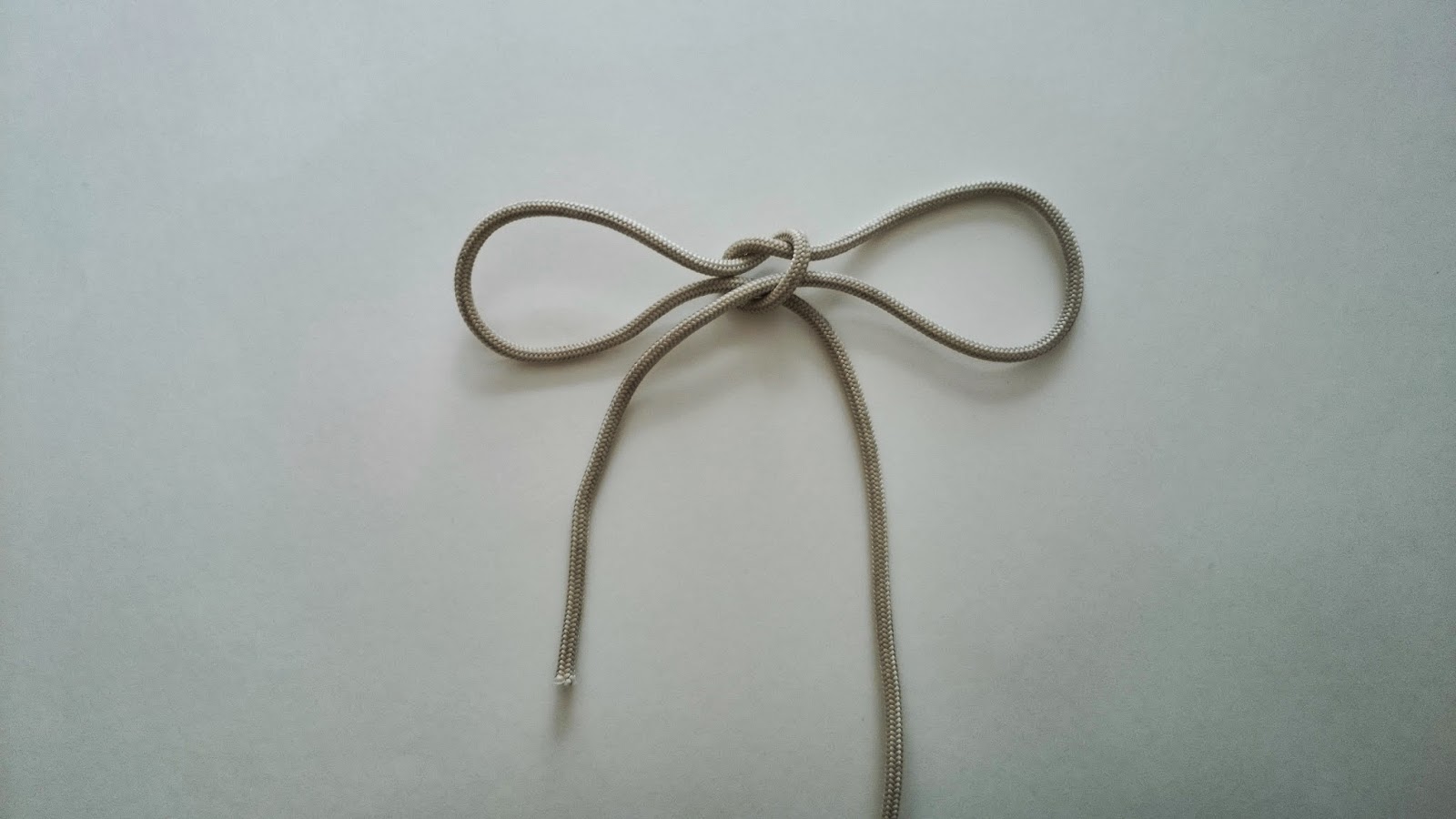Introduction
 |
| Handcuff knot |
With my Scout group this knot is always the first one that I teach when I am introducing knots because it is easy to make a game of it. It gets them interested in the subject of knots (which can be a challenge). What kid doesn't want to capture a friend with handcuffs as part of a cops and robbers game?
Tying the knot
- First, make a butterfly shape with your hands, with the rope hanging across the middle of the thumbs
- Slide your hands apart a bit
- With your right hand fingers, pick up the rope on the left hand and pull it up and through. Keep the bight of rope between your fingers!
- With your left hand fingers, pick up the rope on the right hand and pull it up and through. Keep the bight of rope between your fingers!
- Now finally, pull the two bites apart and let the loops form in the rope.
- Hold the two working ends tight so that the handcuff stays tight.
The knot can be locked by tying a half hitches around each of the loops using the working ends. This is also referred to as a "Fireman's chair knot".
The game
The game that we played with the handcuff knot is basically a modified version of freeze-tag. The object is to capture all of the "robbers" as quickly as they can.
Pick a few kids to be the "police" and give them rope (approximately 1m long). The police need to tag a robber and then the robber has to freeze for the count of 5 seconds. If the police can't tie the knot in 5 seconds the robber gets away and the police need to untie the rope and start again.If the robber is captured they are out until the end of the game.
As the kids get better at tying the knot you can reduce the number of seconds they have. Believe me, they will get very quick at it!


















